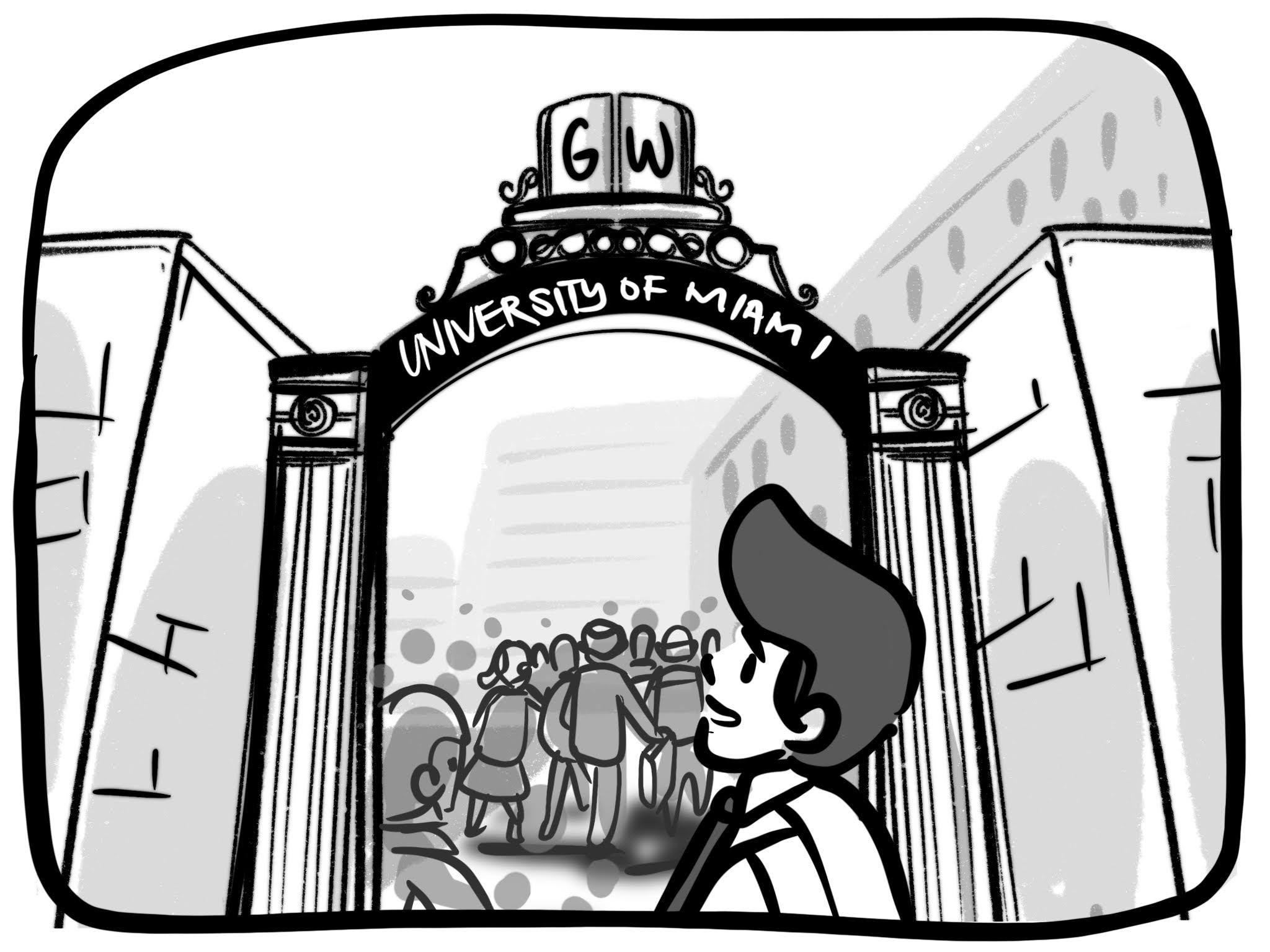Welcome to the University of Miami – in D.C.
University President Thomas LeBlanc came to GW in 2017 after serving as Miami’s executive vice president and provost for more than 10 years. Since his arrival, GW has lost multiple administrators and filled several open seats with former Miami heads. If anything, the University’s hiring pattern raises concerns of nepotism, and students and faculty should take note.
Even if officials’ decisions to pull administrators from LeBlanc’s former institution are not malicious, neglecting to state why most new administrators come from Miami could lead to speculation about our University president’s ties to the school. Hiring LeBlanc’s former colleagues could show that he is opting for former friends while overlooking other qualified candidates for jobs like the business school dean and chief financial officer. By filling vacancies with LeBlanc’s previous colleagues, the University is possibly passing on more qualified candidates from different institutions. Officials should be more transparent about their hiring processes and explain why Miami officials are shooed into the University.
Since LeBlanc took the helm, seven Miami employees have joined the team. The list includes Jared Abramson, the vice president for financial planning and operations; Scott Burnotes, the associate vice president of safety and security; Betty Freyre, the director of administration; Mark Diaz, the University’s CFO and executive vice president; Anuj Mehrotra, the business school dean; Donna Arbide, the vice president for development and alumni relations; and Ed Gillis, the interim enrollment manager.
The University should avoid creating trends in hiring decisions. Hiring too many individuals from the same institution could mean officials are overlooking more qualified candidates at other schools. On top of picking officials from the same school, selecting administrators who all have experience at Miami could create less institutional diversity among the University’s top heads. Each new administrator hailing from Miami is a missed opportunity to bring in fresh insight from hundreds of other schools across the country.

Cartoon by Jekko Syquia
Hiring a majority of top officials from the same school would not raise suspicion if officials explained their hires. The University has a responsibility to its students to state why someone from Miami was hired instead of someone from a different institution. If these officials were hired because of their connections to LeBlanc, the University should not keep students in the dark about it. The University should release information on what led to its decision, including the makeup of the search committee. Officials should also be clear on how many people were considered for the position and how the new hire set themselves apart so that the hire is truly qualified and not one of LeBlanc’s preferences.
Sure, Miami officials may be the most willing or comfortable to work under LeBlanc. Their credentials could be more impressive than other candidates and they could demonstrate the most excitement to collaborate with a University president they know. But the University should still be honest about its hires because of Miami’s pre-existing relationship with LeBlanc. Officials cannot rationalize hiring every new administrator from Miami if they are really searching for the most qualified candidate, so administrators should not be afraid to say if the new hires’ time at Miami factored into their decision.
If officials do not outline their reasons for hiring a lineup of candidates from Miami, they could create concerns from students and faculty about their intentions. Hiring too many administrators from Miami might lead to fewer diverse voices among GW’s leadership because so many administrators are coming from the same place. People with similar work experiences can be an asset to the University: They know how to work together. But the trend could also be a shortfall for the administration because candidates from institutions other than Miami or GW who have different backgrounds and ideas will not get a chance to share them.
The doubt and suspicion around hiring officials from LeBlanc’s former university would be cleared up if administrators communicated with students and faculty about their hiring decisions. Until they do, the University is leading its community to speculate on a trend viewed as favoritism.
The editorial board is composed of Hatchet staff members and operates separately from the newsroom. This week’s piece was written by opinions editor Kiran Hoeffner-Shah and contributing opinions editor Hannah Thacker based on conversations with The Hatchet’s editorial board, which is composed of assistant copy editor Natalie Prieb, managing director Leah Potter, contributing design editor Olivia Columbus, sports editor Emily Maise and culture editor Sidney Lee.


